灌顶幡
1楼 第1展室
2025年4月22日(星期二) ~
2026年4月19日(星期日)

法隆寺宝物馆收藏、展示着明治11年(1878)由奈良的法隆寺进献给皇室,又于战后移交给国家的300多件宝物。这些文物作为古代美术的一大收藏,与正仓院宝物并称双璧,享有盛誉。不过正仓院宝物主要为八世纪的作品,而法隆寺含有大量比其还要早一个世纪的七世纪宝物,这是其一大特色。
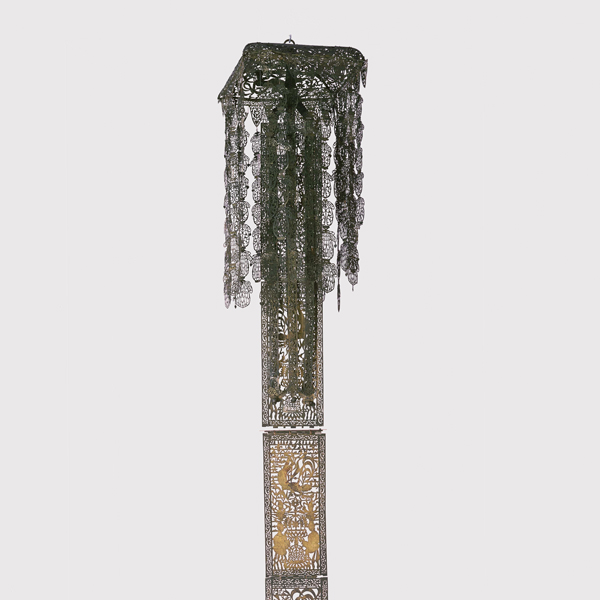
国宝 灌顶幡(局部) 飞鸟时代 7世纪
1楼 第1展室
2025年4月22日(星期二) ~ 2026年4月19日(星期日)
“灌顶幡”是法隆寺进献宝物中的代表性名品,也即天平十九年(747)的《法隆寺伽蓝缘起并流记资财帐》中所记载的“金泥铜灌顶一具”,今日的“灌顶幡”之名称即由此而来。本展室同时展出法隆寺进献宝物中的另一件金属制幡——“金铜小幡”。
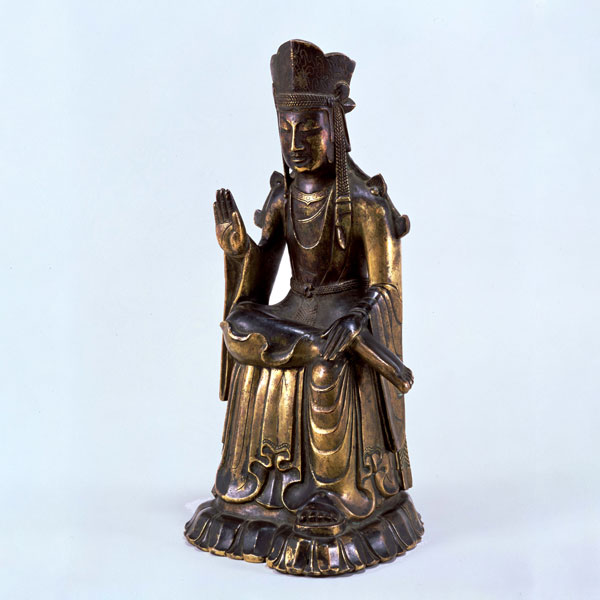
重要文化财 菩萨半跏像 飞鸟时代 7世纪
1楼 第2展室
2025年4月22日(星期二) ~ 2026年4月19日(星期日)
金铜佛是指镀金的铜制佛像,在法隆寺进献的宝物中,皆为高度在30~40公分左右的小型佛像,有许多为贵族个人朝拜用。大部分制作于七世纪,其中还有在朝鲜半岛制作的作品。形状各异,千姿百态,包括有与圣德太子、苏我氏渊源至深的止利派作坊的作品、如同少年般可爱无邪的佛像等。背光的制作年份与金铜佛相仿,但除了与佛像一致的作品外,其余都将分别作出展示。
锤鍱佛像是使用薄铜片披在佛像等的浮雕表面后,用锤或鍱由外侧锤打,以此塑造佛像,它可以从同一个模型制作出多具佛像。在日本,曾经于七世纪后半至八世纪盛行一时,这些佛像被贴在佛堂内壁,或被摆放在橱柜等处成为私人朝拜的对象。在法隆寺进献的宝物中,有流传至今的锤鍱佛像代表作阿弥陀三尊及僧形像等姿态各异的佛像,这些是您在了解古代锤鍱佛像领域时不容忽略的一个作品群。
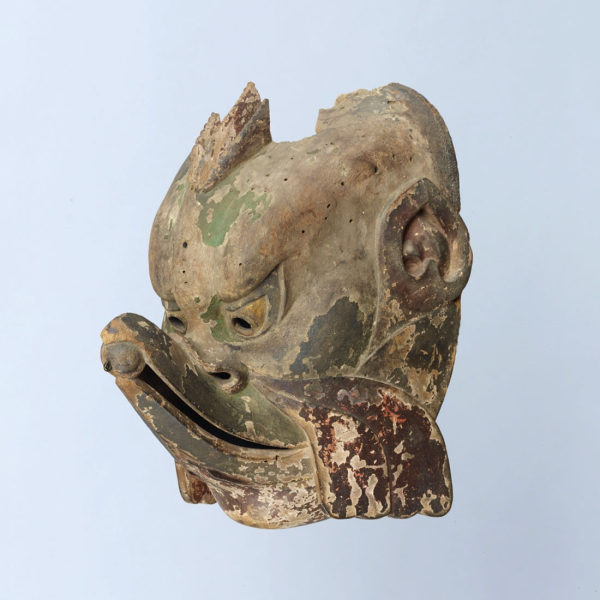
国宝 伎乐面具 迦楼罗 飞鸟时代 7世纪
1楼 第3展室
2025年4月22日(星期二) ~ 2026年4月19日(星期日)
伎乐是戴上大型面具,时而表演短剧,伴随着音乐声在野外列队行走的佛教仪式,据称是于七世纪前半从朝鲜半岛的百济传到日本的。在日本的七至八世纪曾经盛行一时,之后渐渐衰退,最终销声匿迹。法隆寺进献宝物的伎乐面具共有三种,包括19个使用樟木制作的面具,9个使用桐木制作的面具以及3个使用干漆制作的面具。可以认为樟木的是在七世纪后半至八世纪初期制作,其他则是在八世纪制作的。
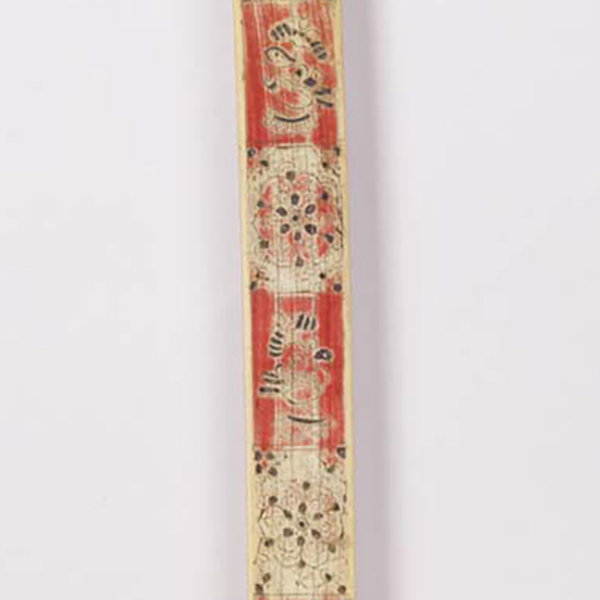
重要文化财 红牙拨镂尺 (局部)
奈良时代 8世纪
2楼 第4展室
2025年9月2日(星期二) ~ 2025年11月24日(星期一)
法隆寺宝物中的木工、漆器包含有佛具、日用器具、乐器、文具、计量器、武器与武具等多个领域的作品,其制作时期横跨飞鸟时代(593-710)至江户时代(1603-1868)。其中,法隆寺高僧——行信僧都所献纳的竹橱子、表面贴有沉香薄片的木纹精美的木绘经箱等,都作为奈良时代(710-794)的精品而闻名遐迩。另外,墨书铭中明确记载其制作于唐代开元十二年(724)中国四川省的七弦琴、近年研究发现其交易中曾有古代波斯人参与的香木等,也都具有重要意义。这些作品不仅使我们了解到日本古代的美术工艺,更使我们能一窥古代东亚文化交流的真实样态。
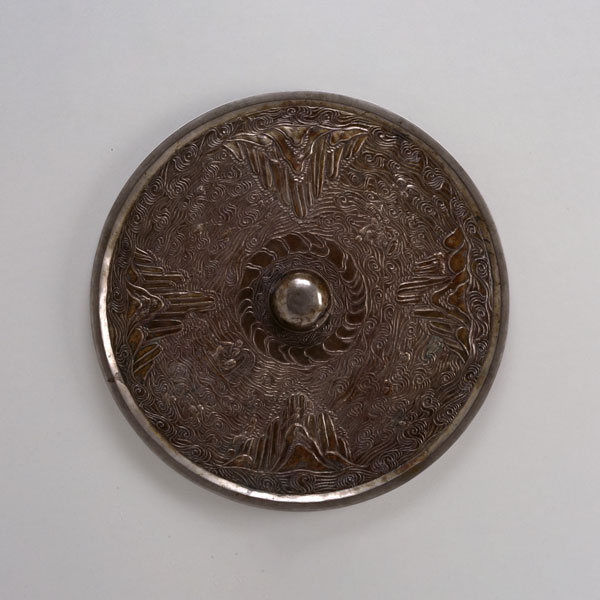
国宝 海矶镜 奈良时代 8世纪 N-74
2楼 第5展室
2025年4月22日(星期二) ~ 2026年4月19日(星期日)
法隆寺宝物中的金属工艺品主要为佛具,从用途上可分为供养具、僧具、密教法具、梵音具等。其制作时期横跨飞鸟至江户时代,但以奈良时代为主。既包括中国和朝鲜半岛传来的作品,也含有众多在日本制作的作品。其中,“龙首水瓶”反映出古代波斯与唐代中国间的密切交流;“鹊尾带柄香炉”堪称日本最古老的柄香炉;“海矶镜”为奈良时代天平八年(736年)光明皇后供奉给法隆寺之物;此外还有相传圣德太子撰写《法华义疏》时所曾使用的墨台、水滴、匙等。这些都是法隆寺进献宝物中金属工艺的代表性名品。
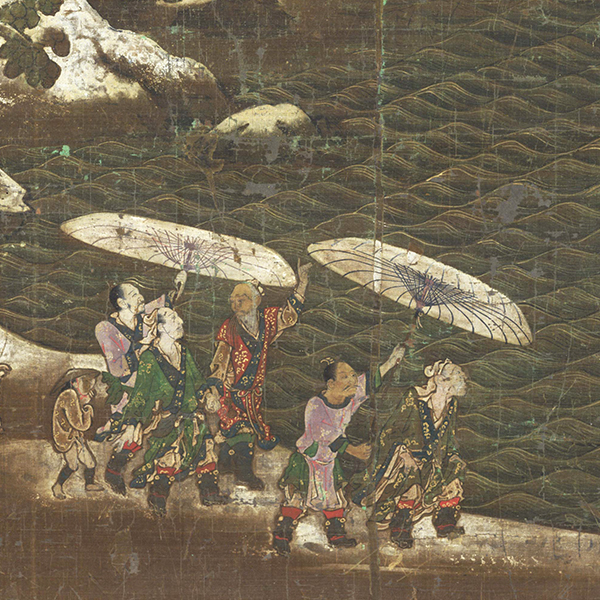
重要文化财 文王吕尚、商山四皓图屏风 (局部)
南北朝时代 14世纪
2楼 第6展室
2025年9月30日(星期二) ~ 2025年10月26日(星期日)
法隆寺宝物中的绘画作品,最著名的有原为法隆寺东院绘殿障子画的《圣德太子绘传》。障子是指用来隔间的木制拉门,张贴于其上的绘画便称为“障子画”。此《圣德太子绘卷》障子画由秦致贞根据圣德太子的一生事迹绘制于延久元年(1069年)。另外,原为法隆寺东院舍利殿障子画的《商山四皓、文王吕尚图屏风》也作为存世稀少的日本南北朝时代(1333-1392)的作品,值得瞩目。
法隆寺宝物中的染织品以包含大量早于正仓院宝物的飞鸟至奈良时代前期作品而著称,其种类包括作为佛事庄严具的“幡”、作为僧衣的百衲衣和袈裟、作为铺垫物的“褥”等。尤其“幡”形式多样,不仅有大型的广东绫大幡、题有文字的幡,还有其他许多用途不明的残片。按织造技法分,有织锦、缂丝、将经线段染后再行织造的“广东裂”、绫、罗、平绢等;按印染技法分,则有被称为“三缬”的绞缬、蜡缬、夹缬等作品。除此以外,还有刺绣、编织带、毛毡等多种技法的染织品。
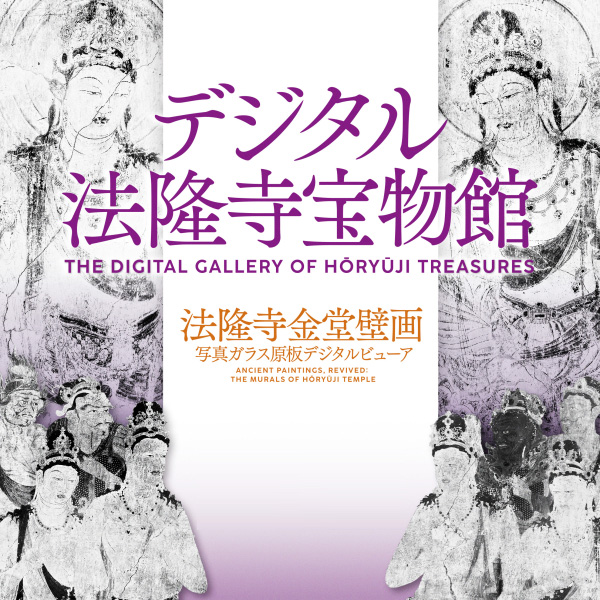
中二楼
互动体验展示空间
2025年7月29日(星期二) ~ 2025年12月21日(星期日)
在数字法隆寺宝物馆中,可以通过数字内容或复制品对无法常设展示的法隆寺相关著名宝物进行详细鉴赏和体验。《法隆寺金堂壁画》为主题,展示富有临场感的图板(复制品)和可在大型8K显示屏上自由鉴赏绘画细节的数字内容。此外,通过考证了伎乐面具和服饰的原始姿态的复原仿制品,可以接触到曾经令人们着迷的伎乐这项艺能的多彩世界观。